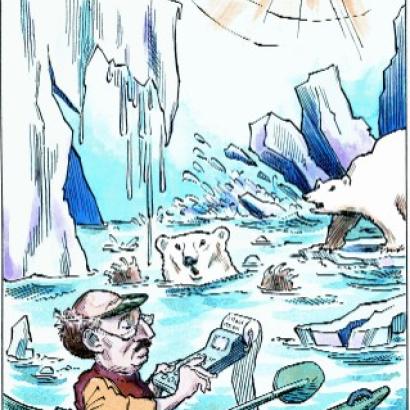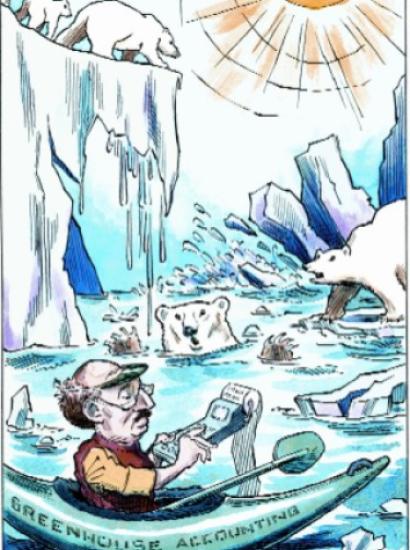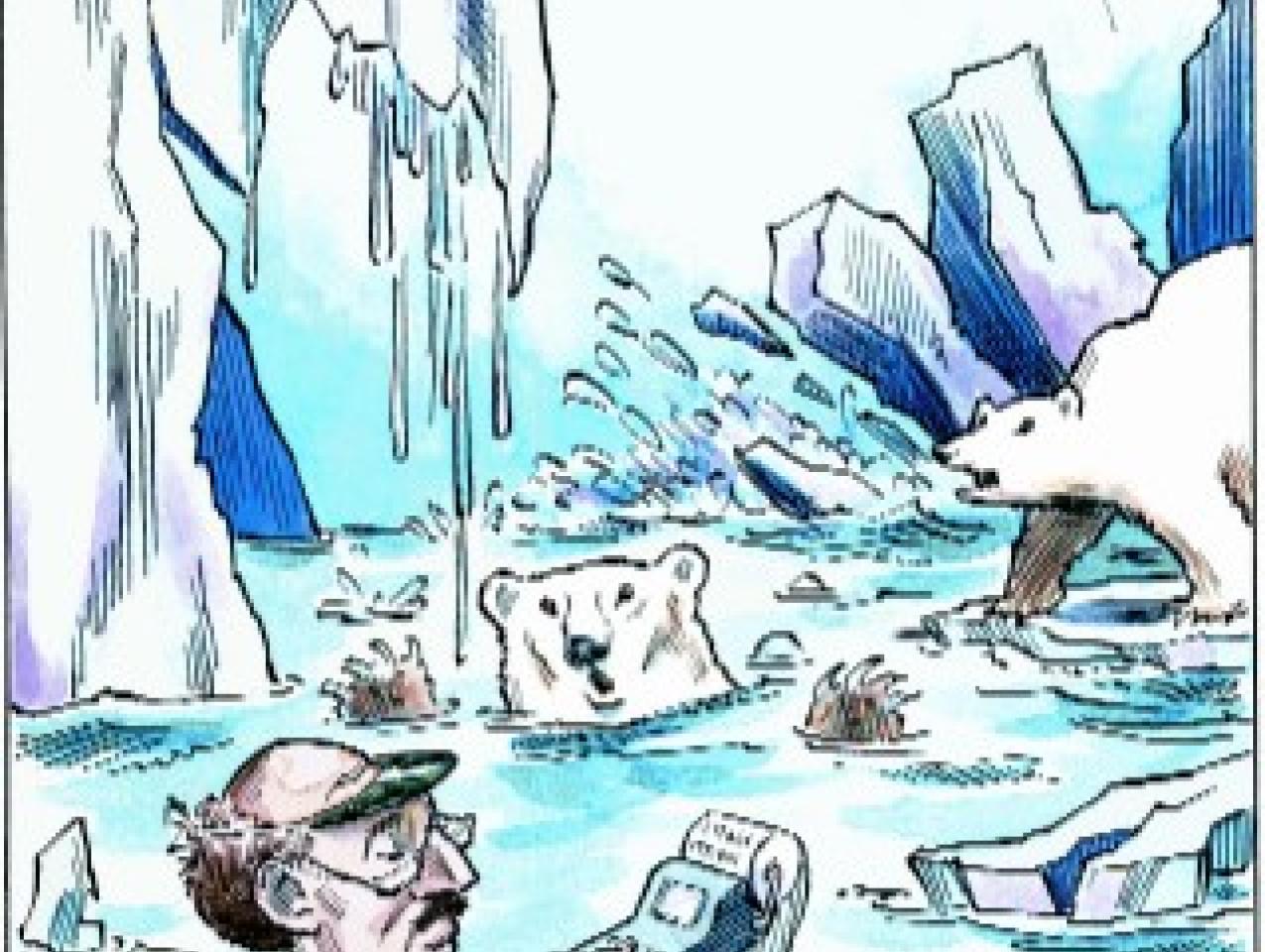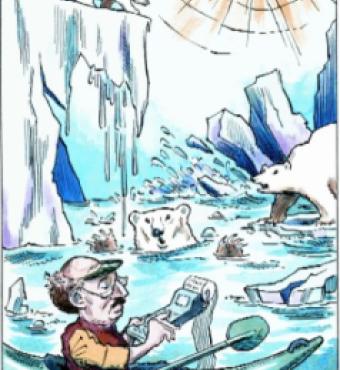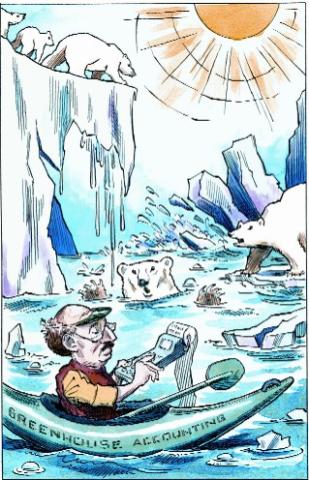- Economics
- Law & Policy
- Regulation & Property Rights
- Energy & Environment
- Politics, Institutions, and Public Opinion
The latest report of the Intergovernmental Panel on Climate Change, issued in February, confirms the scientific consensus that the emission of carbon dioxide and other greenhouse gases, as a result of the combustion of fossil fuels such as oil and gas, and other human activities (such as deforestation by burning), is having significant and on the whole negative effects, causing global temperatures and sea levels to rise. In my book Catastrophe: Risk and Response (2004), I considered the evidence to be altogether convincing that global warming was a serious problem for which human-caused emissions were the principal cause—and since then, more evidence has accumulated and the voices of the dissenters are growing weaker. The global-warming skeptics are beginning to sound like the people who for so many years, in the face of compelling evidence, denied that cigarette smoking was harmful to health.
What has changed since I wrote my book is that not only has the evidence become even more convincing that our activities (primarily the production of energy) are causing serious harm, but also the scientists are becoming increasingly pessimistic. It is now thought likely that by the end of the century, global temperatures will have risen by an average of 7 degrees Fahrenheit and the sea level will have risen by almost two feet. Besides inundating low-lying land, turning tropical farms into desert, and causing tropical diseases to migrate north, global warming is expected to produce ever more violent weather patterns—typhoons, cyclones, floods, and so forth.
There is much uncertainty in climate science, and climate scientists concede that their predictions may be off—and they may be off in either direction. Far worse consequences are possible than those thought highly likely by the authors of the report, including a temperature increase of 12 rather than 7 degrees Fahrenheit, higher sea levels that could force the migration inland of tens of millions of people (or more), the deflection of the path of the Gulf Stream, causing Europe’s climate to become Siberian, and abrupt, catastrophic sea-level rises due to the Antarctic ice shelf sliding into the ocean. Not only has the consensus grown stronger among scientists concerning the harmful anthropogenic (human-caused) character of global warming, but recent evidence indicates that the global-warming problem is more serious than scientists thought just a few years ago.
| Global warming is already imposing costs. These will probably increase steadily in the years ahead. |
My own view, argued in the book, is that the risk of abrupt global warming—a catastrophe that could strike us at any time, with unknown though presumably low probability—is sufficiently costly in expected-cost terms (that is, multiplying the cost of the catastrophe by its probability) to warrant taking costly measures today to reduce emissions of carbon dioxide and other greenhouse gases. Both the scientists and the policy makers, however, are focused mostly on the long-term costs of global warming—costs that will unfold over the remainder of this century. That focus makes the choice of the discount rate important, and potentially decisive.
The discount rate is an interest rate used to equate a future cost or value to a present cost or value. As a simple illustration (and ignoring complications such as risk aversion), if the interest rate is 5 percent, the present value of $1.05 to be received in a year is $1, because if you are given $1 today you can invest it and have $1.05 in a year. Such is financial discounting. But discounting is important even when financial considerations are not the only ones involved. If you have a very strong desire to spend money now rather than a year from now, you might prefer $1 today to $1.50 a year from now.
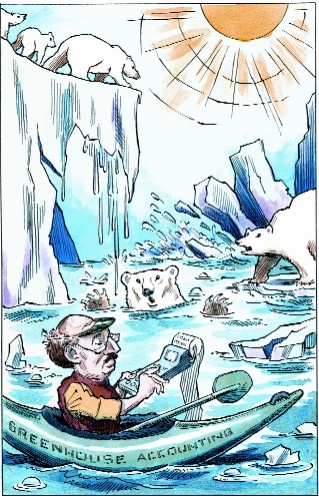
These approaches, however, don’t work well when we ask how much we should spend today to avert costs that global warming will impose in the year 2107. Suppose we estimated that those costs would be $1 trillion. At a discount rate of 5 percent, the present-value equivalent of those costs is only $7.6 billion, for that is the amount that, invested at 5 percent, would grow to $1 trillion in 100 years. At a 10 percent discount rate, the present value shrinks to $73 million.
So it is possible to argue that, rather than spending a substantial amount of money today to try to prevent losses from global warming in the future, we should be setting aside a modest amount of money every year—$73 million this year to deal with global warming in 2107, the same amount next year to deal with global warming in 2108, and so on. Of course, we would also want to pay to prevent the lesser losses from global warming that we anticipate in earlier years. For example, suppose we estimate that the loss in the year 2057 will be $100 billion. Then, at the same 10 percent interest rate, we would want to spend $852 million this year.
Thus, two effects are being balanced in computing the present equivalent of future losses from global warming—the larger loss in the more distant future, and the greater shrinkage of the larger loss, because of its remoteness from today, by the operation of discounting. The discounting effect will often dominate, as in the examples, but this depends critically on the choice of a rate. At an interest rate of 3 percent, a $1 trillion loss in 2107 has a present value not of $73 million, or $7.6 billion, but $52 billion. When any of those figures is added to the present value of losses in intermediate years, the sum will be formidable.
| Environmental worries aside, if we reduce our consumption of energy by imposing a heavy energy tax, we gain national security benefits by reducing our dependence on imported oil. |
What would justify a very high discount rate, which implies that optimal current expenditures to avert the consequences of global warming are relatively low? Perhaps the march of science will deliver us from the consequences of global warming long before the end of the century. Clean fuels for automobiles and electrical plants (where there is already a clean, though more expensive, substitute for oil or coal: nuclear power) will be developed; carbon dioxide emissions from electrical plants may be piped underground; bacteria may be developed to “eat” atmospheric carbon dioxide. Although these are not certainties, they are likely, and so provide a good argument for using a high discount rate, such as 10 percent—and perhaps for considering no losses after 2107, on the theory that the problem of global warming is almost certain to be solved by then.
Nevertheless, there are at least three arguments for incurring hefty current expenditures to reduce carbon dioxide emissions in the near term. The first is that global warming is already imposing costs, which will probably increase steadily in the years ahead. Discounting does not affect those costs very much. They may well be great enough to warrant remedial action now.
| My own view is that the risk of abrupt global warming—a catastrophe that could strike us at any time, with unknown though presumably low probability—is sufficiently costly to warrant taking costly measures today. |
The second argument is that there is a small risk of abrupt, catastrophic global warming at any time, and a small risk of a huge catastrophe can add up to a very large expected cost. “Any time” could of course be well into the future, and thus discounting still has a role, but it is minimized when the focus is on imminent danger.
The third argument is that reducing our consumption of energy by imposing a heavy energy tax would confer national security benefits by reducing our dependence on imported oil. Our costly involvement in the Middle East is due in significant part to our economic interest in maintaining the flow of oil. It is true that because our own oil is costly to extract, a heavy energy tax would not cause much if any substitution of domestic for foreign oil. But that is fine; our oil would remain in the ground, available for consumption if we decide to take measures abroad, such as withdrawing from Iraq, that might reduce our oil imports.
Heavy U.S. energy taxes would induce greater expenditures by industry on developing clean fuels and techniques for carbon sequestration, might persuade other big emitters like China and India to follow suit, and by reducing emissions of carbon dioxide slow the increase in the atmospheric concentration of the gas. Drastic reductions might actually reduce that concentration, because carbon dioxide does eventually leach out of the atmosphere, though at a slower rate than it is built up by emissions.








